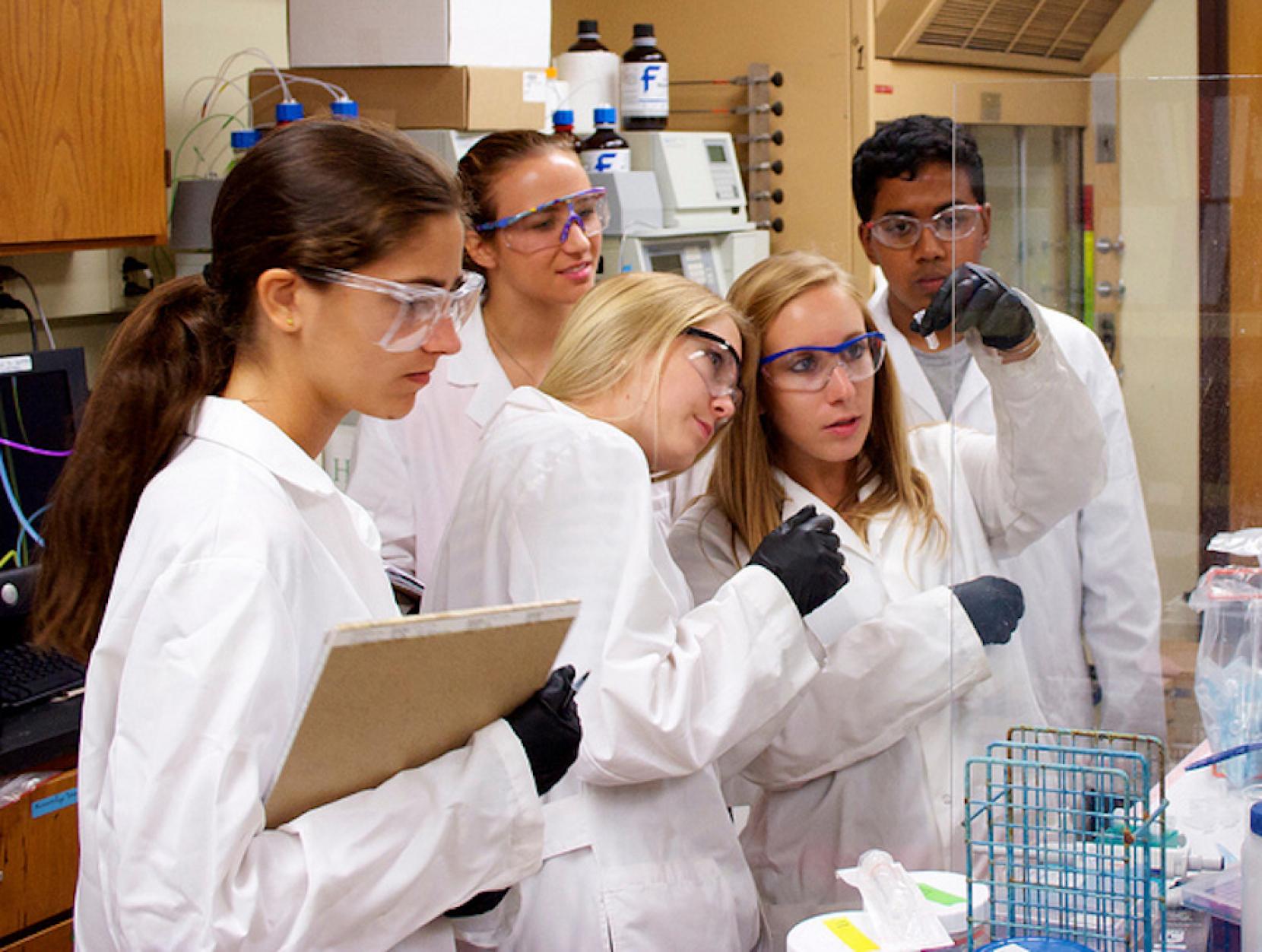
In center, Sarena Horava, the study’s lead author and a recent Ph.D. graduate from the Cockrell School of Engineering, helping high school students.
Thanks to a breakthrough led by researchers in the Cockrell School of Engineering at The University of Texas at Austin, treatment for hemophilia can now be administered via a biodegradable system, a capsule, giving people affected by the hereditary bleeding disorder hope for a less expensive, less painful treatment option than conventional injections or infusions.
The researchers designed the oral delivery system, which contains micro- and nanoparticles, to carry a protein therapy that treats hemophilia B. There are approximately 400,000 people worldwide living with either hemophilia A or hemophilia B, both caused by a missing protein in their blood. Hemophilia B is caused by a missing or defective factor IX, a clotting protein. The researchers describe their system in the Nov. 30 issue of the International Journal of Pharmaceutics.
The bleeding disorder affects people throughout the world, but global accessibility to therapy is limited by cost, the need for trained medical personnel and possible complications associated with
«While an oral delivery platform will be beneficial to all hemophilia B patients, patients in developing countries will benefit the most," said Sarena Horava, the study’s lead author who is a recent Ph. D. graduate from the Cockrell School’s McKetta Department of Chemical Engineering and a National Science Foundation graduate research fellow. «In many developing countries, the median life expectancy for hemophilia patients is 11 years due to the lack of access to treatment, but our new oral delivery of factor IX can now overcome these issues and improve the worldwide use of this therapy.»
 Horava, who now works at Triton Systems, collaborated with
Horava, who now works at Triton Systems, collaborated with
Peppas said that alleviating the burden of injections for children was the impetus for the research project, which started about nine years ago.
«My most pressing concern was the treatment of younger patients who suffer from hemophilia and who have to apply injections every two days," Peppas said. «The original idea of the project was conceived when Dr. Lisa
Peppas and Horava’s work has been patented and builds upon their published and patented system for the oral delivery of human factor IX (hFIX), a prophylactic treatment for hemophilia B patients. That system was successful in transporting hFIX, and it was able to deliver adequate levels of the drug to the target site in the body. The biggest challenge in delivering hFIX is that it is extremely delicate and unstable in the body’s various pH environments. The researchers’ new and improved system is designed to capitalize on the body’s pH and changes in enzymes inside the gastrointestinal tract for a smooth delivery.
As it moves through the body, the
«Based on the current capabilities of this system, approximately two capsules would be equivalent to one injection," Horava said. «However, we anticipate that we will make further improvements to the delivery capacity of the oral delivery system and therefore decrease the capsule amount.»
The researchers plan to further test this system before clinical trials. They are working with the UT Austin Office of Technology Commercialization to further advance the technology for clinical use. The researchers indicate that their ultimate goal is to position this technology for Food and Drug Administration approval.
This research received funding from the National Institutes of Health, the Fletcher S. Pratt Chair, the National Science Foundation Graduate Research Fellowship Program, the P.
Source: https://news.utexas.edu/2016/11/28/engineers-develop-first-ever-capsule-to-treat-hemophilia


